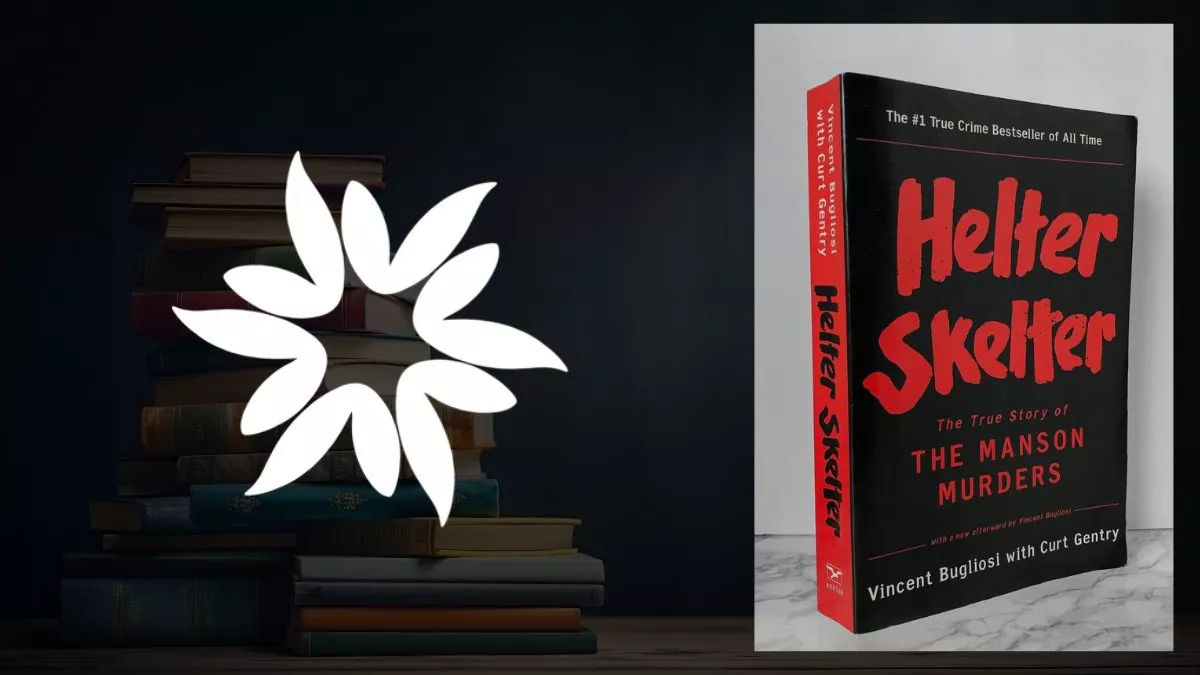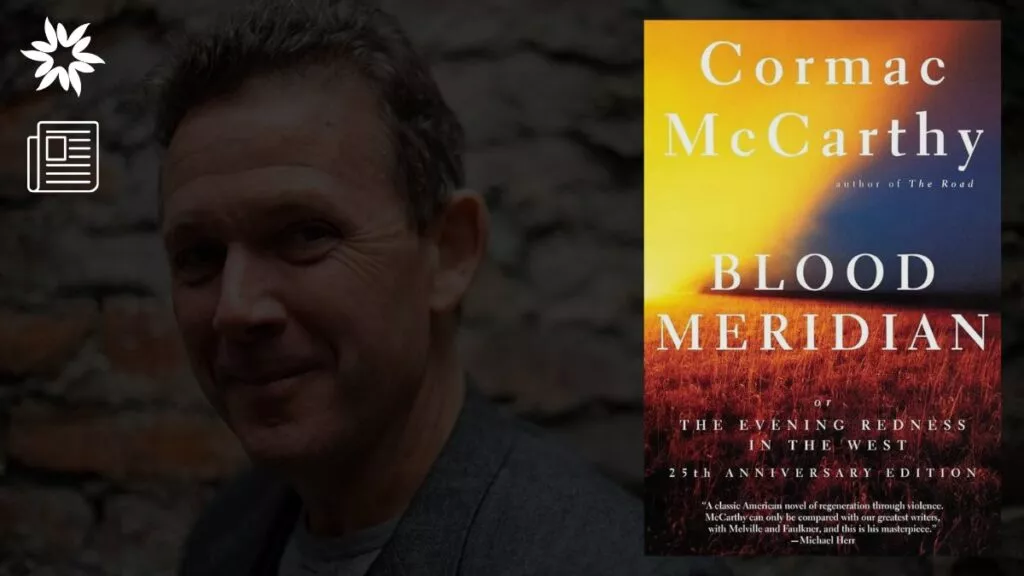Serial killers have always fascinated people, whether it’s through chilling real-life stories or fictional accounts of their twisted minds.
There’s something about trying to understand how they think, why they kill, and what drives them to do such terrible things.
If you’re a fan of true crime or psychological thrillers, there’s no shortage of books diving into the twisted minds and chilling crimes of some seriously disturbed people.
Lucky for you, we’ve done the homework and rounded up some of the best serial killer books to kick off your reading list.
Key Takeaways
- If you're fascinated by true crime and want a deeply personal view into the mind of Ted Bundy, The Stranger Beside Me by Ann Rule is a must-read.
- If you enjoy fiction with deep psychological layers, The Silence of the Lambs by Thomas Harris is perfect for you.
- For those who want a true crime classic, In Cold Blood by Truman Capote is a groundbreaking book that sets the standard for modern true crime writing.
1. Helter Skelter by Vincent Bugliosi
Helter Skelter is a gripping, unsettling account of the Manson Family murders, written by Vincent Bugliosi, the prosecutor who handled the case, with help from Curt Gentry.
Disturbingly, it dives deep into the chilling 1969 murders led by Charles Manson, where seven people, including actress Sharon Tate, lost their lives.
Bugliosi takes you through how Manson, using his intense charm, manipulated his followers into committing these brutal crimes.
Manson saw himself as some kind of messiah, preaching about a made-up race war he called “Helter Skelter,” inspired by a Beatles song. And he convinced his followers that by committing these murders, they would help start this war.
It’s wild how he spun this bizarre story and even more shocking how he got ordinary people to carry out such horrific acts.
Aside from Manson’s creepy mind games, the book also explains how Bugliosi put together a rock-solid case to take them down in court.
The courtroom drama is just as intense as the crimes, with Bugliosi breaking down how he proved Manson was the mastermind, even though Manson wasn’t physically present at the crime scenes.
Undoubtedly, the book offers a deep dive into the disturbing psychology behind the Manson Family while also reflecting the cultural fears of the 1960s.
Through tons of detail, Bugliosi shows just how far Manson’s twisted beliefs went and the lasting mark they left on America.
Helter Skelter is often hailed as one of the best true crime books, praised for being factual and riveting.
2. In Cold Blood by Truman Capote
Truman Capote’s In Cold Blood is a groundbreaking piece of true crime writing. It arguably set the standard for how crime stories are told.
It’s about the 1959 murders of the Clutter family in small-town Holcomb, Kansas, and how investigators eventually caught the killers, Perry Smith and Richard “Dick” Hickock.
Capote paints a vivid picture of the crime, which shocked everyone with its cold, senseless brutality.
What makes In Cold Blood stand out is the way it’s written. Capote spent over six years investigating the case, interviewing everyone from residents to the killers themselves.
The result is a book that’s a dry retelling of events and an intimate look at the people involved.
It’s incredible how Capote gives us a full view of both the victims and the killers, diving deep into their lives and psyches, making the whole thing feel very personal and heartbreaking.
Capote’s portrayal of Perry Smith is one of the most talked-about parts of the book.
Even though Smith is clearly guilty, Capote writes about him with surprising sympathy, showing his troubled childhood and emotional struggles.
This angle stirred up some controversy, with people debating whether Capote went too far in humanizing a murderer.
In Cold Blood is considered a classic of true crime writing and one of the best serial killer books. Its blend of factual reporting and novel-like style, which was groundbreaking back then, still influences crime writing today.
3. American Predator by Maureen Callahan
Beware, as American Predator by Maureen Callahan is one of those true crime books that’ll leave you unsettled.
The book’s focus is on Israel Keyes, a serial killer who somehow flew under the radar for years—despite being one of the most calculating and creepy murderers out there.
Keyes crisscrossed the U.S. for over a decade, planning his killings down to the smallest detail and leaving almost no evidence behind.
Callahan takes you through the intense hunt for Keyes, which only ends when he makes a small mistake during the abduction of his final victim, Samantha Koenig, in Alaska.
Keyes was different from other serial killers in a lot of ways. He didn’t have a specific “type” when it came to victims, which made him way harder to catch.
Plus, he had this weird habit of burying “kill kits” full of weapons and cash all over the country, sometimes leaving them untouched for years before using them. Pretty terrifying, right?
Callahan digs deep into Keyes’s operation, showing how his random, unpredictable approach made him a nightmare for law enforcement.
What makes this book especially chilling is how Callahan portrays Keyes. He was smart, cold as ice, and knew exactly how to play the system, which helped him keep his killing spree under wraps for so long.
Through interviews with FBI agents, cops, and others, Callahan pieces together how Keyes pulled it off. Not to mention, the book raises some scary questions about how someone this dangerous slipped through the cracks for so long.
Thus, if you want a deep dive into the mind of a killer who left everyone, even after his capture, with more questions than answers—this book’s for you.
4. The Silence of the Lambs by Thomas Harris
There’s no doubt that The Silence of the Lambs by Thomas Harris is a must-read if you’re into psychological thrillers.
It’s where we meet two of the most unforgettable characters ever—Dr. Hannibal Lecter, a super-smart but totally twisted psychiatrist and cannibal, and Clarice Starling, an ambitious FBI trainee.
The premise is gripping and intense, to say the least. Starling needs Lecter’s help to catch another serial killer, “Buffalo Bill,” and that’s where the mind games begin.
What pulls you in is the weird relationship between Starling and Lecter. Lecter’s locked up, but he agrees to help Starling track down Buffalo Bill—only if she spills some details about her life.
And man, does Lecter know how to mess with her head. He digs into her past, and this psychological cat-and-mouse game blurs the lines between who’s in control.
Harris does an incredible job getting into the twisted minds of these killers. Buffalo Bill is one of the most disturbing characters, period—he kidnaps, and skins women, and the way Harris writes his psyche is seriously chilling.
But what makes the book stand out is the depth of the characters. Lecter and Starling are complex and layered, which only makes the story way more captivating.
Oh, and let’s not forget: this novel blew up big time when it was adapted into a hit movie. Hannibal Lecter became one of the most iconic villains ever, and The Silence of the Lambs is now considered a classic in the psychological thriller genre.
If you haven’t read it yet, you’re missing out on one of the best serial killer books ever written.
5. Mindhunter: Inside the FBI’s Elite Serial Crime Unit by John E. Douglas
Mindhunter by John E. Douglas is a book that pulls you in right from the start. Interestingly, it gives you a front-row seat to how the FBI cracked the code on serial killers.
Co-authored with Mark Olshaker, this book takes you inside the world of criminal profiling, especially when it comes to dealing with the worst of the worst—serial killers and violent criminals.
Douglas was one of the first criminal profilers, and his work setting up the FBI’s Behavioral Science Unit changed the game.
He spent 25 years chatting with infamous killers like Charles Manson, Ted Bundy, and John Wayne Gacy, getting inside their twisted minds to figure out what made them tick.
And these interviews weren’t just for show—they were key to developing techniques to predict the behavior of criminals the FBI hadn’t caught yet.
In the book, Douglas explains how he used these insights to solve some of the country’s most terrifying crimes.
What’s cool about Mindhunter is how it blends gripping true crime stories with deep dives into criminal psychology.
You get both the behind-the-scenes stories of how cases were cracked and how profiling changed how we hunt down killers.
As you will see if you read this book, Douglas doesn’t hold back on the emotional toll these investigations took on him and his team. On top of that, he delves into how this work shaped modern-day criminal psychology.
Oh, and if you’ve seen the Netflix series Mindhunter, that’s based on this book.
So, if you’re curious about where criminal profiling started or want a peek into the minds of the most dangerous criminals, Mindhunter is a must-read.
6. My Friend Dahmer by Derf Backderf
My Friend Dahmer by Derf Backderf is a different kind of true crime story—it’s a graphic novel that gives you an up-close and personal look at Jeffrey Dahmer, one of America’s most notorious serial killers, through the eyes of someone who knew him in high school.
Instead of focusing on Dahmer’s crimes, this book zooms in on his teenage years, showing him as an awkward, lonely kid before he ever committed any murders.
Backderf, who was one of Dahmer’s classmates, paints a picture of a troubled teen who was clearly struggling but hadn’t yet crossed that line into becoming a killer.
The fact that the book follows Dahmer through his high school days is something we rarely see in serial killer books—providing insight into the making of the monster he became.
My Friend Dahmer shows how he grew increasingly isolated and displayed bizarre behavior that made his classmates uncomfortable.
What’s even more chilling is how all the warning signs were there, but the adults around him just didn’t seem to notice or care.
This isn’t a story that excuses what Dahmer became, but it does give you some insight into the early life of someone who would go on to commit such horrific acts.
Backderf shows us Dahmer’s family issues, his struggles with alcohol, and his early signs of cruelty—like experimenting with animal mutilation—painting a picture of a kid spiraling into darkness.
The book leaves you wondering if things could have gone differently for Dahmer or if he was always on this path.
What makes My Friend Dahmer so powerful is how it humanizes Dahmer without making excuses for his later crimes.
It’s a haunting, reflective look at how a quiet, troubled boy turned into a monster, offering a rare glimpse into the making of a killer.
7. The Serial Killer Files by Harold Schechter
The Serial Killer Files by Harold Schechter is like the ultimate go-to guide for all things related to serial killers.
It’s a massive encyclopedia that dives into the lives, crimes, and twisted psychology of some of the world’s most notorious murderers.
Schechter, who’s basically a crime history expert, breaks down cases from all over the world and across different eras, giving readers a deep understanding of these chilling figures.
But this isn’t just a book full of gruesome details about killers like Ted Bundy, John Wayne Gacy, and Jeffrey Dahmer.
Schechter goes beyond the gore, exploring the psychology behind why these people did what they did.
He talks about the different types of serial killers, what common traits they share, and what kinds of social and environmental factors might push someone toward such darkness.
He even gets into some criminology theories, explaining how these killers fit into psychological models and why we, as a society, are so fascinated by them.
One of the best things about this book is how Schechter presents all this info. Even though it’s packed with facts, research, and expert analysis, it’s still super engaging and easy to follow.
Whether you’re a casual reader or a hardcore true crime fan, you’ll find it accessible. Schechter doesn’t go overboard with sensationalism, either.
He sticks to the facts and lets the real horror of these cases speak for itself, which makes it all the more chilling.
On top of profiling the big-name killers, Schechter also digs up stories of lesser-known murderers. He even goes way back in history to show how serial killers have been viewed over time.
It’s an educational, fascinating, and downright creepy read for anyone curious about what makes these killers tick.
8. Zodiac by Robert Graysmith
Zodiac by Robert Graysmith is one of those true crime books that’ll keep you up at night. It covers the terrifying mystery of the Zodiac killer, who terrorized Northern California in the late 1960s and early ’70s.
The Zodiac killer became infamous for sending creepy, cryptic letters to the media and the police, full of weird symbols and ciphers.
Even with a huge, and we mean huge, investigation, no one ever caught the guy, and to this day, his identity is still a mystery.
During the height of the Zodiac’s reign of terror, Graysmith, a political cartoonist at the San Francisco Chronicle, got obsessed with the case.
This book goes beyond a simple rundown of the murders—it offers an inside look at the investigation and the toll it took on everyone involved.
Graysmith gathers clues from police reports, interviews, and the Zodiac’s letters to build a case for who he thinks the killer is.
Perhaps the biggest reason Zodiac is gripping is the detailed breakdown of how the killer worked.
The Zodiac targeted random people, often young couples, and sent these bizarre letters to the press, basically taunting the cops and the public.
Some of his ciphers supposedly held clues to his identity, but not all have been cracked.
Graysmith also digs into how the killer manipulated the media and law enforcement, playing a twisted game with them while they tried to catch him.
One of the coolest parts of the book is how it tracks Graysmith’s personal journey. He starts as a guy on the sidelines but eventually gets so wrapped up in the case that it takes over his life.
His obsession with solving the mystery intensifies the story, pulling readers into the Zodiac’s terrifying world.
If you’re a true crime fan, Zodiac is a must-read that’ll keep you hooked from start to finish.
9. The Stranger Beside Me by Ann Rule
The Stranger Beside Me is one of the creepiest true crime books out there, and a big reason for that is Ann Rule’s unique perspective.
Before Ted Bundy became one of the most notorious serial killers ever, Rule knew him personally.
Yep, they worked together at a crisis hotline in Seattle and became friends. Bundy seemed like a regular guy at the time—smart, charming, and totally normal.
No one had any idea that this guy would go on to become a monster.
This book gives you a chilling peek into Bundy’s double life. To most people, he was this likable law student who had his act together.
But behind that facade, he was one of the most dangerous and sadistic killers in history.
Rule recounts her friendship with Bundy and how she slowly started to suspect—but didn’t want to believe—that her friend could be behind the brutal murders of so many young women across multiple states.
What makes this book hit so hard is how personal it is. Sure, it dives deep into the crimes. But at the same time, it touches on Rule’s personal journey—she has to face the shocking truth that someone she knew and trusted could commit such horrible acts.
She shows how Bundy managed to fool everyone around him, including her, which makes the whole story even more disturbing.
Rule’s emotional struggle, torn between her connection to Bundy and the undeniable evidence of his guilt, adds a raw, human layer to the story.
Besides that, the book digs deep into Bundy’s trial and the psychology behind his twisted behavior. Rule’s background in law enforcement gives readers a behind-the-scenes look at how Bundy could fly under the radar for so long.
It’s a must-read if you want a true crime story that’s as much about the people involved as it is about the crimes themselves.
10. Hannibal Rising by Thomas Harris
Hannibal Rising by Thomas Harris takes you back to where it all began, unraveling the chilling backstory of one of fiction’s scariest villains—Hannibal Lecter.
This prequel to Red Dragon and The Silence of the Lambs digs into Hannibal’s childhood and the dark, traumatic events that turned him into the brilliant yet terrifying killer we know.
The story kicks off during World War II in Eastern Europe, where a young Hannibal watches his entire family get brutally murdered by war criminals.
In the aftermath, this horrific event leaves him orphaned and seriously messed up, with nothing but chaos and violence in his life.
As Hannibal grows up, the trauma from those early experiences fuels his thirst for revenge, and you can see the slow transformation of this once-bright kid into the cold, calculating killer we meet in the later books.
Harris does an amazing job of showing how Hannibal’s journey into darkness isn’t sudden but rather a slow, inevitable slide.
Raised by his uncle and later moving to France, Hannibal uses his intelligence and charm to get back at the people who destroyed his family.
By the end of the book, you can clearly see the makings of the refined yet horrifying Hannibal Lecter we all recognize.
A big theme in Hannibal Rising is the whole nature versus nurture debate. Was Hannibal always destined to become a killer, or was it the trauma and violence he faced as a kid that shaped him into the monster he became?
Harris leaves that question open, and that makes Lecter’s character even more complex and disturbing.
While Hannibal Rising might not have gotten the same rave reviews as Harris’s earlier books, it’s still fascinating for fans who want to dig deeper into what makes Hannibal tick.
If you’ve ever wondered how someone as refined as Lecter could also be so terrifying, this book gives you a lot to think about.
Explore True Crime and Thrills: Choose Your Next Book
Now that we’ve checked out some of the most fascinating books about serial killers, you’re all set to pick one (or more) that matches your interest in true crime or psychological thrillers.
If real-life crime stories catch your attention, The Stranger Beside Me by Ann Rule gives a personal look at Ted Bundy that’s hard to beat, and American Predator by Maureen Callahan will leave you spooked with its detailed dive into the chilling behavior of Israel Keyes.
Suppose you prefer fiction with deep psychological twists. In that case, you can’t go wrong with Thomas Harris’s The Silence of the Lambs or Hannibal Rising, where you’ll explore the chilling brilliance of Hannibal Lecter.
No matter which one you pick, you’re in for a wild ride into the darker side of human nature. And if you’ve got the time, why not read them all? They’re absolutely worth it!








